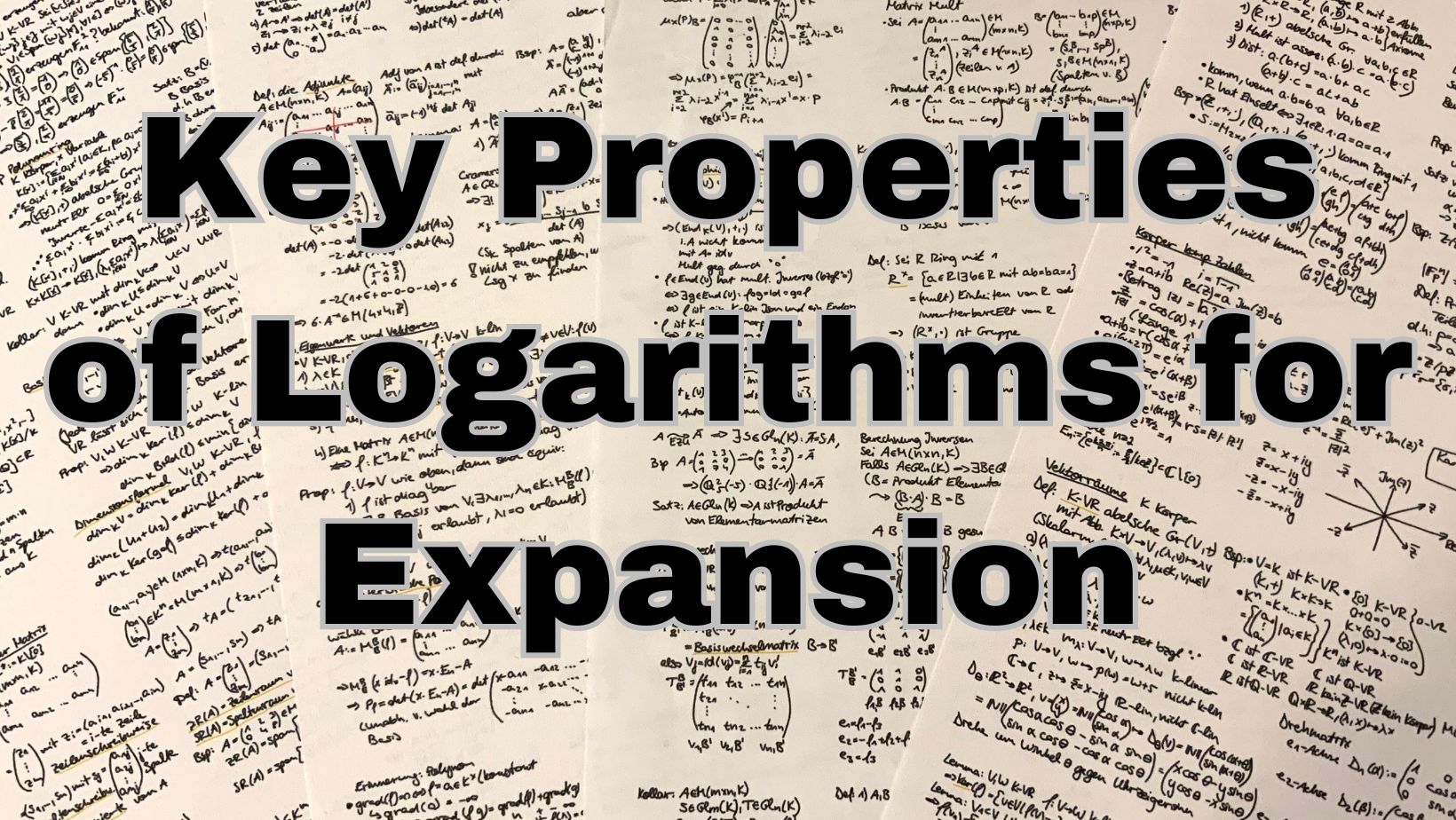Joe is a blogger who likes to share his life with others. He loves spending time with his family and friends, and he enjoys writing about his experiences. Lillian is a kind and caring person, and he wants to help others in whatever way he can.

Logarithms are indispensable tools in mathematics, widely used for simplification, manipulation, and solving equations involving exponential functions. Understanding the key properties of logarithms is essential for expanding expressions and solving complex problems efficiently. In this article, we’ll delve into six fundamental properties of logarithms that facilitate expansion: the Product Property, Power Property, Quotient Property, Change of Base Formula, Logarithm of One, and Logarithm of the Base. If you want to learn some Expanding logarithms examples, visit SolvelyMaths.
Role Of Properties Of Logarithm Used For Expansion
The key properties of logarithms are indispensable tools in mathematics, particularly for expanding expressions involving exponential functions. These properties allow mathematicians to simplify complex calculations by breaking them down into more manageable components.
Whether it’s multiplying, raising to a power, or dividing, these properties provide a systematic approach to handling logarithmic expressions. Additionally, the ability to change bases and understand the behavior of logarithms for specific values like one or the base itself adds versatility and depth to mathematical analyses. Overall, these properties serve as foundational principles that streamline mathematical operations, making them essential in various fields of study.
6 Key Properties Of Logarithms Used For Expansion
1. Product Property
The Product Property in logarithms establishes that the logarithm of the product of two numbers is identical to the addition of the logarithms of the individual numbers.
This property allows us to break down complex multiplications into simpler additions, facilitating the expansion of logarithmic expressions.
2. Power Property
The Power Property in logarithms states that the logarithm of a number raised to a power is equivalent to the product of the exponent and the logarithm of the base. This property is particularly useful for simplifying expressions involving powers, enabling us to handle exponents more efficiently during expansion.
3. Quotient Property
The Quotient Property in logarithms establishes that the logarithm of the quotient of two numbers is identical to the subtraction of the logarithms of the numbers separately. This property allows us to break down divisions into subtractions, facilitating the expansion of logarithmic expressions involving fractions.
4. Different Base Formula
The Change of Base Formula presents an approach to represent logarithms in an alternative base. It articulates that the logarithm of a number ‘x’, with base ‘a’, can be represented as the division of the logarithms of ‘x’, having bases ‘b’ and ‘a’. This property is particularly useful when working with logarithms of different bases, providing flexibility in calculations and expansions.
5. Logarithm of One
The Logarithm of One property states that the logarithm of one (log base ‘b’ of 1) is always equal to zero, regardless of the base. This property simplifies expressions involving logarithms of constants, aiding in the expansion and evaluation of logarithmic functions.
6. Logarithm of the Base
The Logarithm of the Base property affirms that the logarithm of a number having an identical base will always be equivalent to one.
This property serves as a fundamental rule in logarithmic calculations and expansions, providing a basic understanding of the behavior of logarithmic functions.
Conclusion
Understanding the key properties of logarithms is essential for expanding expressions, simplifying calculations, and solving equations effectively. By leveraging the key properties, mathematicians can manipulate logarithmic expressions with confidence and accuracy. These properties not only facilitate expansion but also provide insights into the behavior and relationships of logarithmic functions across various mathematical contexts.
